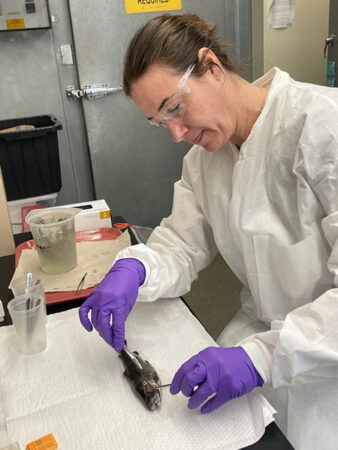
News & Views
Disease Management
‘Disappointing loss’: 160,000 trout lost in Oregon after novel parasite infection
March 27, 2024 By Hatchery International staff
 Raceway at Elk River Hatchery used to raise rainbow trout. (Photo: Oregon Department of Fish and Wildlife)
Raceway at Elk River Hatchery used to raise rainbow trout. (Photo: Oregon Department of Fish and Wildlife) Oregon Department of Fish and Wildlife (ODFW) has killed 160,000 infected rainbow trout after detecting a novel parasite at three hatcheries.
In late 2023, ODFW fish health and hatchery staff noticed increased mortality in several raceways of rainbow trout at Klamath Falls, Rock Creek and Elk River hatcheries. Staff tested the fish for bacteria and viruses but did not detect any known pathogens.
They began working with Oregon State University’s College of Veterinary Medicine and Department of Microbiology and identified an unknown parasite within the blood vessels, gills, and kidney tissue of the affected trout.
“Preliminary genetic testing places this parasite as a Myxidium species in the class Myxozoa which includes over 2,400 parasitic organisms,” a press release from ODFW states.
This parasite has a two-host life cycle, first infecting an invertebrate host such as an aquatic worm before moving into the water where it infects fish. It later leaves the fish to infect a worm again. Sometimes these parasites are associated with disease in the fish.
“While this parasite is thought to already exist in the Pacific Northwest region, it is the first time we have seen it associated with illness and mortality in fish in Oregon,” said Dr. Aimee Reed, aquatic veterinarian and ODFW’s senior fish pathologist.

ODFW senior fish pathologist Dr. Aimee Reed with a rainbow trout affected by the parasite. (Photo: Oregon Department of Fish and Wildlife)
Hatchery staff treated the trout with two rounds of antibiotics and other supportive care but the fish were unresponsive to treatment.
The origins of the parasite are still unclear. Due to infrastructure loss during the 2020 wildfires, Klamath Falls and Rock Creek hatcheries are currently unable to raise fish at their earliest life stages. The rainbow trout were hatched at Trask Hatchery in February 2023 and transferred to Klamath Falls in June during their fry stage and from there to Elk River and Rock Creek in the fall.
The parasite can infect the fish’s kidney and urinary systems. Where spores can be excreted into water, they’re available to continue their life cycle in more worms and more fish. Because of the risk of spreading the parasite, the fish exposed cannot be safely released into Oregon’s waters. ODFW hatchery staff have disposed of the symptomatic trout to stop the spread of the pathogen.
“This is a disappointing loss but allowing the parasite to spread could be much worse and put even more fish at risk,” said Reed. “Situations like this are why Oregon’s state hatcheries have vigorous biosecurity measures and monitoring programs.”
ODFW’s hatcheries raise and release about 3.8 million rainbow trout annually and hatchery managers have identified about 104,000 surplus trout being raised at other hatcheries to cover most of what was lost. Trout stocking across the state will be slightly decreased to make up the shortfall, minimizing the effect on any one trout stocking.
ODFW and Oregon State University are continuing to work to identify the exact myxozoan species and determine how and when it infected the fish and caused disease.
“We know that high temperatures and low flows are more inviting for parasites like myxozoans to infect fishes,” said Reed. “Climate change is causing exactly these conditions so it could be playing a role in why we are seeing this parasite now.”
Print this page
Advertisement
- Scottish Sea Farms incubation unit receives first set of eggs
- Inside India’s billion-dollar seafood challenge





